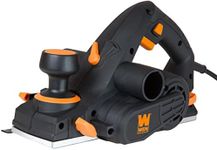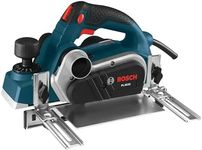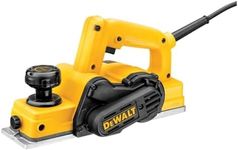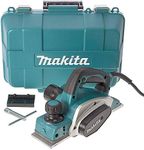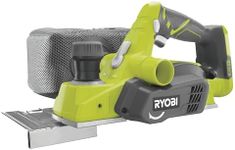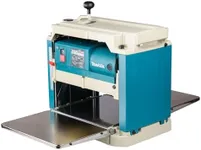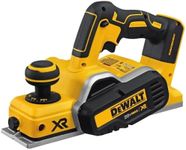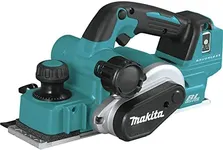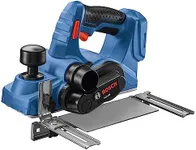Buying Guide for the Best Portable Wood Planers
Choosing the right portable wood planer can make a significant difference in the quality and efficiency of your woodworking projects. A portable wood planer is a versatile tool that helps you achieve smooth, even surfaces on your wood pieces, making it easier to join, shape, and finish your work. When selecting a portable wood planer, it's important to consider several key specifications to ensure you get the best fit for your needs. Understanding these specs will help you make an informed decision and choose a planer that meets your specific requirements.Cutting WidthThe cutting width of a portable wood planer refers to the maximum width of the wood piece that the planer can handle. This spec is important because it determines the size of the wood you can work with. Planers with a cutting width of around 12 inches are suitable for most general woodworking tasks, while those with a width of 15 inches or more are better for larger projects. If you primarily work with smaller pieces, a narrower cutting width will suffice, but for larger furniture or cabinetry projects, a wider cutting width is beneficial.
Cutting DepthCutting depth indicates how much material the planer can remove in a single pass. This is crucial for efficiency and achieving the desired thickness quickly. Planers typically offer cutting depths ranging from 1/16 inch to 1/8 inch. For light-duty tasks and fine adjustments, a smaller cutting depth is adequate. However, for more substantial material removal and faster work, a deeper cutting depth is preferable. Consider the type of projects you undertake and choose a cutting depth that aligns with your needs.
Motor PowerMotor power, measured in amps or horsepower, determines the planer's ability to handle tough materials and maintain consistent performance. Higher motor power means the planer can handle harder woods and larger pieces without bogging down. For general woodworking, a motor with around 10-15 amps is sufficient. If you frequently work with dense hardwoods or large volumes of material, opting for a planer with higher motor power will ensure smooth and efficient operation.
Cutterhead TypeThe cutterhead is the part of the planer that holds the blades and does the actual cutting. There are two main types: straight knife and helical (or spiral) cutterheads. Straight knife cutterheads are more common and less expensive, but they can be noisier and may leave slight lines on the wood. Helical cutterheads, on the other hand, use multiple small blades arranged in a spiral pattern, providing a smoother finish and quieter operation. If you prioritize a high-quality finish and reduced noise, a helical cutterhead is a better choice, though it comes at a higher cost.
PortabilityPortability is a key factor for a portable wood planer, as it determines how easy it is to move and transport the tool. This includes the weight of the planer and any features that make it easier to carry, such as handles or compact design. Lighter planers, typically under 60 pounds, are easier to move around and suitable for job sites or workshops with limited space. Heavier planers may offer more stability and power but can be cumbersome to transport. Consider how often you need to move the planer and choose a model that balances portability with the necessary features and power.
Dust CollectionDust collection is an important feature for maintaining a clean and safe work environment. Planers generate a significant amount of wood shavings and dust, so having an effective dust collection system is crucial. Look for planers with built-in dust ports that can be connected to a vacuum or dust collection system. Some models come with their own dust bags or blowers. If you work in a small or enclosed space, efficient dust collection is essential to keep the area clean and reduce health risks associated with wood dust.
